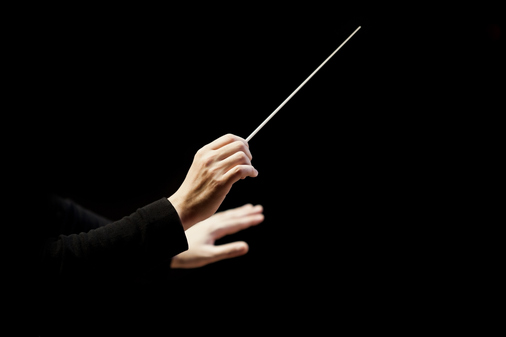After observing me teach a lesson last semester, a visitor remarked, “You are the conductor.” I hope she wasn’t referring to trains — but to those maestros who conduct full symphony orchestras. Like a Zubin Mehta. I’ve always wanted to know what that feels like to create incredible music without saying a word, simply by moving a baton and releasing the energy that inspires musicians.
A teacher-conductor helps consolidate the synergy in the classroom so that all the musicians and sections work and create together.
Although I certainly don’t see myself as a maestro, I began to think about the metaphor. In a student-centered classroom, teachers really are conductors who lead, inspire, and energize students while giving them ownership of the sounds they create.
Each student is a musician. Some are a bit out of tune, some rarely practice at home, and some can’t afford the nice cases or strings to keep their instruments in tip-top shape. But I want them all to become independent learners who eradicate learned helplessness — solo performers who can play on their own, and team players who can contribute appropriately and meaningfully to a large orchestra. Ideally, I want them to be college- and career-ready so they can play and succeed without me.
As the conductor, I don’t always compose the score. Sometimes it’s handed to me by state or district requirements. But I do control how we learn the music.
I have to study and prepare the piece before class, creating goals for certain sections that I feel need more crescendo. I locate the difficult parts so that we can practice those over and over again.
I even control the tempo of the classroom through my questions and planning — always giving students the autonomy to feel safe playing aloud in an environment where I will not criticize them for playing out of tune. Instead, I help them correct those sour notes. Sometimes I call on individual musicians to play aloud; other times, we practice in small groups or sections before pulling the orchestra back together for a harmonious finale.
A teacher-conductor helps consolidate the synergy in the classroom so that all the musicians and sections work and create together. Each musician should feel as important as the others, but all of them are contributing to the whole. Isn’t that what an exciting classroom discussion entails? An awesome assignment that is meaningful and represents students’ best work?
Effective teachers are often compared to coaches. Although I really like the sports comparison, I think I will get rid of my whistle and picture myself picking up the baton from now on.
ABOUT THE AUTHOR

Nancy S. Gardner
NANCY S. GARDNER is a National Board Certified Teacher, recently retired after 31 years teaching, and currently is a communications coach and member of the Center for Teaching Quality Collaboratory, Carrboro, N.C.









